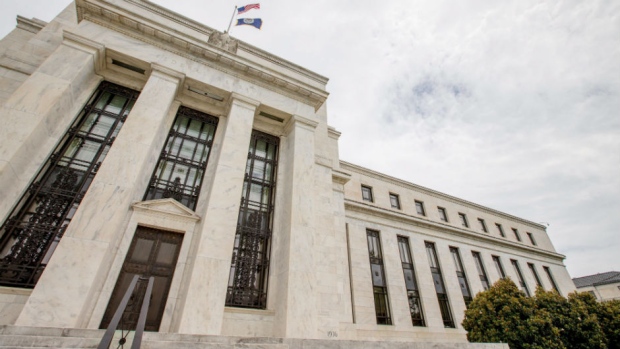Oct 11, 2017
Fed looking for stronger price gain evidence before raising rates again
, Bloomberg News

Federal Reserve officials held a detailed debate last month over whether forces holding inflation down were persistent or temporary, with several policy makers looking for stronger evidence of price gains before supporting a third interest-rate hike this year.
“Many participants expressed concern that the low inflation readings this year might reflect not only transitory factors, but also the influence of developments that could prove more persistent,” according to minutes of the Sept. 19-20 meeting, released Wednesday in Washington.
Several policy makers said their decision on whether to raise rates this year “would depend importantly on whether the economic data in coming months increased their confidence” on inflation rising toward their 2 percent target.
At the meeting, the U.S. central bank left the target range for the federal funds rate unchanged while projecting another increase before the end of the year and announcing an October start for a gradual unwind of its $4.5 trillion balance sheet. The minutes suggest that the forecast for another rate increase in 2017 is conditioned on economic data showing that the inflation target is within reach over the next couple of years.
“It was noted that some patience in removing policy accommodation while assessing trends in inflation was warranted,” the minutes said.
Before the release of the minutes, investors saw about a 78 percent probability of one more rate increase by the end of the year, according to pricing in fed funds futures markets. Fed officials have meetings scheduled on Oct. 31-Nov. 1 and Dec. 12- 13.
Hurricane Impact
Getting a clear read on economic data may be difficult as some prices, such as gasoline, are affected by recent natural disasters in the U.S. The Fed’s post-meeting statement on Sept. 20 said the hurricanes would affect the economy in the near term but were “unlikely to materially alter” its course over the medium term.
The minutes said Fed policy makers expected third-quarter growth “to be held down by the severe disruptions caused by the storms but to rebound beginning in the fourth quarter as rebuilding got under way and economic activity in the affected areas resumed.”
Even though the Trump administration and Republicans in Congress have deemed tax reform a top priority, most Fed participants had either not assumed any fiscal stimulus in their projections made in September, the minutes said, “or had marked down the expected magnitude of any stimulus.”
When officials met last month, they were grappling with low unemployment that hadn’t translated into consistently higher wages or inflation, while buoyant asset markets have kept financial conditions easy.
Many officials said U.S. financial conditions would support the economic expansion, while a couple of participants “expressed concern that the persistence of highly accommodative financial conditions could, over time, pose risks to financial stability,” the minutes said.
Employment, Inflation
U.S. unemployment dipped to 4.2 percent in September, the lowest since 2001, while average hourly earnings rose 2.9 percent on a year-over-year basis, a pickup that may be partly related to effects from two major hurricanes. Fed officials expected employment to be “temporarily depressed” by the storms; data last week showed payrolls fell in September for the first time since 2010.
The Fed’s preferred gauge of prices rose by 1.4 percent in the 12 months through August and has been below policy makers’ 2 percent target for most of the last five years.
In quarterly projections prepared for the meeting, policy makers forecast a labor market running hot, with the jobless rate at 4.1 percent in the final three months of 2018 and 2019. That’s below the 4.6 percent rate they estimate as the longer-run sustainable rate of unemployment that keeps supply and demand in balance. The minutes said “many” participants “continued to believe” that labor-market pressures would show through to higher inflation eventually.
The committee also discussed trends that could be holding inflation lower such as technological innovations and their impact on business pricing.
“Several expressed concern that the persistence of low rates of inflation might imply that the underlying trend was running below 2 percent, risking a decline in inflation expectations,” the minutes said. “If so, the appropriate policy path should take into account the need to bolster inflation expectations in order to ensure that inflation returned to 2 percent.”
Craig Torres
Brendan Murray